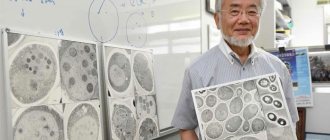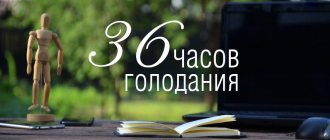What is fasting according to Nikolaev
Yuri Sergeevich Nikolaev has been dealing with issues of treatment by lack of food for many years. In his book “Fasting for Health,” the professor notes that fasting-dietary therapy according to the method he developed brings positive results in the fight against diseases of the respiratory system, joints, obesity, and allergies. It is indicated for mental illness such as schizophrenia. Nikolaev's fasting and dietary therapy is effective for problems with the heart and digestive tract.
The set of procedures includes massage, cleansing enemas, breathing exercises, and walks. The first stage of therapy is a complete refusal to eat, only clean drinking water up to 2 liters per day. Dry therapeutic fasting, without liquid, is recommended in the first 2-3 days. Then water is needed to maintain the body's resources. During the entire period - cleansing procedures and long walks. The second stage is restoration according to a special menu, starting with fresh juice and grated vegetables. To prevent edema, salt is excluded from the diet.
Fasting according to Nikolaev - what, how, why
The timing of abstinence from food is individual for each person. However, during his practice, the professor derived an average value that will suit most people. The basic course lasts for 25-30 days, which is quite a lot, wouldn’t you agree?
During this period, people lost about 10-16% of their total body weight. This indicator is considered safe.
Fasting process
The doctor of science distinguished three periods of abstinence from food:
- food excitement
- increasing acidosis
- adaptation
What is their fundamental difference and how are they characterized?
- First stage
The 1st period lasts from one to three days. The body experiences some kind of shock and tries to adapt to a long period without eating food. This stress involves specific areas of the brain. The person does not perceive any talk about food. All this causes abundant salivation and typical rumbling in the stomach.
- Second stage
Acidosis is a process of oxidation. The stage lasts around 2-5 days. At this time, the body begins to absorb its own reserves, breaking down toxins and obsolete tissues. Thus, oxidation of the internal environment occurs.
At the end of the stage (3-5 days), chronic diseases appear. The brightness of their manifestation indicates how well non-eating affects the general condition. If the disease shows itself mildly, this means that the body is busy solving more important problems. And vice versa, if the manifestation is vivid, then most likely the body will completely get rid of the disease.
- Third stage
During the period of adaptation or compensation, the body is completely rebuilt to its own reserves. All symptoms and discomfort go away. The feeling of hunger no longer occurs, only periodic thirst is characteristic. Strength and vitality accumulate.
However, this feeling ends approximately on day 8-12. This time is characterized as the second acytodic crisis. The deterioration of the condition is maximally manifested, loss of strength is observed, and the temperature rises. You just need to endure this time. After 1-2 days, the energy returns in full. General well-being and mood improves.
| The book “Fasting for health. Forgotten achievements of Soviet medicine" by Yu. S. Nikolaev, E. I. Nilov, V. G. Cherkasov - buy a book on OZON.ru with fast delivery by mail |
Basic rules for every day
- Before you start, Nikolaev recommends doing a cleansing enema. It must also be carried out every day throughout the entire process.
- Drink 1.5-2 liters of water.
- Walk in the fresh air for 2 hours.
- Mental and physical labor required
- Massage and complete relaxation
- Sunbathing
Competent restoration
Breaking out of fasting is a whole science and should never be neglected. Yuri Sergeevich believed that the recovery process should be exactly the same in duration as the period of not eating. You should go out gradually, adding new products little by little.
- On day 1 you just need to reduce physical activity and spend the whole day in bed.
- At 2-3, it is allowed to drink juices diluted with water, 50 to 50.
- On the 3-4th day you can start drinking real live juices (orange, apple).
- 5-6 days, add grated fruits and carrots
- On days 7-8 you are allowed to eat fresh vegetable salads and honey.
- Starting from day 9-10, Nikolaev recommended including protein and plant foods in the diet. As your health improves, you can introduce traditional cereals like oatmeal.
Treatment with hunger according to Nikolaev at home
Not everyone can undergo RDT under the supervision of specialists and in a circle of like-minded people. In this case, you can choose the method of fasting at home. You just need to create comfortable conditions to prevent depression for the entire period, and strictly follow the professor’s recommendations described in the book. The help of relatives in this matter will be one of the components of success. Consultation with a specialist in this technique is necessary
Fasting process
RDT begins with a cleansing enema and taking magnesium powder. The quantity depends on the weight. A person of average build is prescribed 50 g per 100 ml of water. After taking the solution, you should drink more water. From this moment on, eating is no longer possible. It is recommended to take bitter salt in the morning so that the laxative effect does not occur during sleep. After the enema, you need to take a warm shower, during which you perform a self-massage of the abdomen. Circular movements from the groin area to the stomach will help the intestines work more actively. The massage lasts 3-5 minutes.
At 13-14 hours you need to take 200 ml of rosehip decoction, half an hour later go outside for a walk. In the evening, another glass of rosehip. During the day you need to drink up to 2 liters of liquid - drinking, boiled or still water. Before going to bed, thoroughly clean your mouth. The second day is similar to the first, only rose hips are used for breakfast and lunch. Physiotherapy alternates with the main regimen every other day. This includes Charcot's shower, diathermy, and UHF.
Fasting according to Nikolaev
Content:
There are dozens of methods of therapeutic fasting, each of which has certain features, advantages and disadvantages. One of the most effective is the Nikolaev system. The author not only successfully practiced it, but also published several books detailing the mechanisms of action and possible effects.
It is fasting according to Nikolaev that doctors most often recommend for medicinal purposes. It is carried out in a hospital setting under the supervision of specialists. But some fasters successfully practice it at home. The duration of the entire course is three weeks. But more about everything.
What to remember
Fasting according to Nikolaev is considered one of the ways to get rid of excess weight and overcome a number of diseases. When limiting yourself in nutrition, you should take into account many factors, including basic rules. Before attempting a fast, check the contraindications and consult your doctor.
Have you, dear reader, had any experience with fasting? If yes, then share your observations in the comments, I would be very grateful. Don't forget to subscribe to our newsletter and stay healthy.
See you in the next article!
The essence of fasting
Yuri Sergeevich Nikolaev is a famous psychiatrist and Doctor of Economics. For many years, he successfully worked on fasting-dietary therapy (the scientist did not like the term “fasting”), using it to treat mental pathologies, improve the overall health of the body and get rid of excess weight.
The unique technique he developed was described in detail in the book “Fasting for Health.” Subsequently, other publications containing useful theoretical information were published. The technique has several features:
Interesting fact. Views regarding nutrition and a healthy lifestyle were influenced by Lev Nikolaevich Tolstoy, who was a close friend of Nikolaev’s father.
Let's dive into the background, who is this healer?
Yuri Nikolaev (1905-1998) - author of works on fasting-dietary therapy (RDT). He is a Doctor of Science in Psychiatry. The doctor believed that the correct approach to the fasting process could cure a number of serious diseases. These include:
- mental illness
- overweight
- gastrointestinal problems
At the Moscow Research Institute, a specialist practiced dosed therapeutic abstinence from food. His clinic was famous for its successful cures, ranging from obesity to complex mental illnesses.
Among Nikolaev’s notable works, I would like to mention his book “Fasting for Health. Forgotten achievements of Soviet medicine.” After reading this creation, you will learn how, back in Soviet times, people defeated incurable diseases through starvation. The book provides a detailed description of all processes, as well as guidance for action.
The unique action of fasting
Yuri Nikolaev studied intermittent fasting for a long time. He started with theory (from antiquity to modern times), then, together with other scientists, he moved on to research that helped to understand how the technique works on humans. The results of many years of study are described in detail in the book.
When food stops coming from outside, the body is forced to switch to internal nutrition. Accumulated resources are used as an energy source. To spend them, systems have to work in accelerated mode. During a fast, the body is cleansed of:
The effect of therapy is amazing:
How is therapeutic fasting according to Nikolaev useful?
This method of treatment is widely practiced in various medical centers.
Most often it is used:
- As a therapy for psychosomatic diseases;
- To normalize digestion;
- For the treatment of autoimmune diseases: asthma, allergies, rheumatism, arthritis;
- In order to increase brain activity;
- To achieve anti-inflammatory effects on the entire body;
- As an effective aid in the prevention and treatment of cardiovascular pathologies;
- To improve immunity;
- If necessary, cleanse the body of waste and toxins;
- In order to eliminate sleep disorders and improve general condition.
Correct use of therapeutic fasting, developed and studied by Nikolaev, helps you lose weight quickly and safely. At the same time, many note that abstaining from food, observing all the rules prescribed by the professor, is much easier than following a regular diet. In addition, when using this method of unloading therapy, the skin does not sag and the muscles do not become thinner.
Fasting according to the Nikolaev method
The fasting method, which Nikolaev developed, is a classic method of fasting and cleansing the body, which has some distinctive features. Therapeutic fasting according to this method lasts up to 3 weeks; longer periods are rarely used for serious illnesses. Treatment using this method was carried out in medical institutions and hospitals, which also affected the timing of the famine.
During cleansing of the body using Nikolaev’s method, the patient should be under the supervision of doctors in order to avoid complications that fasting can cause.
It’s easier to stick to fasting with someone; like-minded people will support and give advice. If you decide to fast outside the hospital, then make friends who have already practiced the technique before. This will prevent you from deviating from the method and harming yourself.
According to Nikolaev, fasting is accompanied by a number of additional actions and procedures that increase the effect of fasting. Among them:
Together, short fasting and procedures help achieve therapeutic results and get rid of a number of diseases. Nikolaev in his book gives a detailed description of the method; you need to familiarize yourself with it, at least briefly, before starting the famine.
Initiation and maintenance of hunger
The author of the method advises fasting under the supervision of doctors, since the patient must undergo a full examination to establish his health status. The future starving person will have to undergo tests of urine, blood, and feces. You also need to do a cardiogram, determine your pulse, weight, talk to a therapist and psychologist. Fasting is not an easy test from a psychological point of view.
The duration of the course is determined based on the results obtained during the examination and taking into account the wishes of the person. More often the course lasts 25-30 days, rarely – up to 40 days. During hunger, people lose a significant part of their body weight, about 15% of their original weight. Such a sudden drop can be frightening for patients, which is why it is recommended that a doctor or health worker monitor the fasting person.
The main step is the emotional preparation of a person for the upcoming fast, getting rid of stereotypes and cliches that without eating a person will die.
This stage is followed by a period of physical preparation of the body. A significant dose of bitter salt is introduced into the body (around 13:00 - 14:00) and then food intake and medications are stopped.
The next morning is accompanied by cleansing procedures using a laxative enema. Unfortunately, an enema together with a laxative are not able to remove all the debris and toxins from the intestines at one time, so the procedures are carried out daily.
Usually, starving people are surprised by the appearance of waste in the absence of food, but studies have shown that if the method is followed, the same thing happens as in the body of newborns. The body switches to the endogenous type of food and assimilates its own reserves, as a result of which feces are still formed.
After the laxative enema, the following procedures follow: water and “pressure” massage. When a massage is performed correctly, the blood vessels overflow with blood and the skin becomes red. The result is especially noticeable in the chest, spine and neck areas. Water treatments usually include relaxing in a bath or soaking in the shower.
The massage is done, the bath is taken. The next stage is “breakfast”, taking rosehip tincture (decoction). The decoction does not taste pleasant, but it is necessary to drink it.
The next thing in the daily routine is rest, which lasts from 20 minutes to half an hour. Afterwards, it is important for the fasting person to take a walk. If fasting occurs in winter or cold weather, then you need to dress warmly, preferably in several layers. It is difficult for the body to warm itself on its own, since there is nowhere to get “fuel” from.
Walking in the fresh air should be accompanied by simple breathing exercises (for example, rhythmic: 3 steps - inhale, 3 steps - exhale). You should walk until one or two in the afternoon, and then return for “lunch,” which is the same intake of rosehip decoction or water. In hot weather, when walking, they also drink clean water, generally more than 2 liters. There is no fluid per day, although there are no limits on fluid intake.
Once every 2 days, people undergoing treatment are sent for physiotherapy. Physiotherapeutic methods are prescribed by a doctor and vary depending on the disease; they may include: Charcot's shower, magnetic therapy, UHF therapy, etc.
There should be no free time when you are hungry. It is important to engage in non-labor-intensive activities: reading, board games, drawing, watching movies, music. When a person's day is scheduled according to the clock, it is easier for him to tolerate the lack of food.
In the evening or before going to bed, you should drink rosehip decoction again; in general, 3-4 doses of liquid are taken per day. Before going to bed, patients perform hygiene procedures, clean their mouths, and drink water.
The room in which a fasting person sleeps must be sufficiently ventilated. Ideally, a new supply of oxygen is constantly introduced into the room. The patient should not feel cold, so he should sleep well covered. In the final days of hunger, when there is absolutely nothing to warm the body, heating pads are placed on the patients.
The regime is strictly observed throughout the entire period of hunger, while the patient does not lose vitality. A person who has competently gone through fasting is full of energy and quite active, able to cope with light physical activity. The only difference from a non-fasting person is increased sensitivity to cold.
Appetite and the feeling of hunger are dulled or disappear completely after the first 3 days of hunger, reflexes associated with eating are reduced to nothing. Patients do not react to the smell and are indifferent to the clinking of dishes. Thoughts about food bother us throughout the entire period of fasting, which is why a person’s schedule is filled with activities as densely as possible.
During times of famine, people need psychological support; this is another plus for hospitals where there are nurses who are called upon to help doctors. The sanatorium staff monitors the well-being of patients, sympathizes, and helps with advice. Additional questions and rejection of the method arise in the person being treated, because refusing food is not a traditional method of treatment, causing a lot of controversy.
Contact with other patients or people who have gone through hunger helps a hungry person gain psychological resilience.
An indicator that it is time to stop fasting is, oddly enough, the appearance of appetite and a refreshed complexion. These two signs serve as proof that the body has been cleansed of poisons and toxins and is ready for further functioning. At the end of fasting, the unpleasant odor from the mouth disappears, and feces almost stop accumulating in the intestines. It happens that fasting has to be stopped earlier, due to the patient’s well-being or the need for medication, but even short-term fasting is effective.
The end of fasting is usually perceived by patients as a victory; many people forget about a competent exit from the method as soon as the last day without food has passed.
Properly carried out restoration of the body is as important as sustained fasting. It is during the exit that the patient’s attention to himself and on the part of the doctor should increase; from a psychological point of view, cleansing is still perceived as deprivation, and when hunger stops, a breakdown is possible. The best food to finish off is fruit and vegetable juices, a light meal without animal protein.
Concepts of environmental education according to S. N. Nikolaeva
Bibliographic description:
Gretskaya, Yu. P. Concepts of environmental education according to S. N. Nikolaeva / Yu. P. Gretskaya. — Text: immediate // Current tasks of pedagogy: materials of the VIII International. scientific conf. (Moscow, November 2021). - Moscow: Buki-Vedi, 2021. - pp. 37-39. — URL: https://moluch.ru/conf/ped/archive/272/13052/ (access date: 09.27.2021).
Nikolaeva S.N. believes that initially the basis of environmental work with children should be the transfer of knowledge and information about nature.
And as the final stage in environmental work with children, this author puts the formation and consolidation in the child of a certain type of attitude towards the natural environment (cognitive, aesthetic or humanistic).
According to her opinion, the way a person has become in practical life, relates to nature, is an indicator of environmental education and upbringing.
The foundation for environmental education of preschoolers is the traditional system of introducing children to nature.
Nikolaeva S.N. puts two points into the content of environmental education: the transfer of knowledge in terms of ecology and its modification into attitudes.
In her opinion, knowledge underlies the process of forming the beginning of ecological culture, and attitude is its final product.
Only true knowledge in this area forms a conscious attitude and gives rise to environmental consciousness.
Nikolaeva S.N. believes that when approaching issues of environmental education, first the focus is on nature and that man is part of it, and then prerequisites are put forward in terms of the need to study the patterns that exist in nature itself.
Only a clear understanding of them will allow a person to understand the fullness and correctness of interaction with nature and live with it according to its laws. Modification of knowledge occurs if the teacher provides his own guidelines when working with children. And when there is a manifestation of a subjective attitude towards nature, here we can already talk about independent activity.
The kindergarten teacher is the bearer of environmental culture, and he is a decisive link in the environmental education of children. If the teacher understands environmental problems and the reasons that gave rise to them, if the teacher feels responsible as a citizen in the situation in which he finds himself, has the readiness to change it for the better, has professionalism and skill, masters the methods of environmental education of preschoolers, is aware of the goals and objectives in its activities, regularly applies various technologies of development, upbringing and education in practical activities with children, if it is oriented in practical activities by the new humanistic model of environmental education, which consists in creating a favorable atmosphere for children in kindergarten, and takes care of their physical and mental health , uses personal and oriented methods in his work, then in this context we can say that the children began their journey in the right direction and acquired initial knowledge of environmental culture.
Next, we will highlight the following groups of methods that allow them to be used comprehensively, which in practical activities leads to an increase in the level of environmental education of children, as well as the development of the environmental orientation of their personality:
1) the teacher and the child must create and maintain the necessary living conditions for living beings within the framework of joint work - this method should be recognized as the main one in environmental education.
2) observation is a method of sensory knowledge of nature. This method allows for direct contact with nature, living beings, and the environment.
3) the modeling method plays a significant role in the system of environmental education.
4) the verbal-literary method is an independent method, since it is very specific due to speech activity.
Nikolaeva S.N.’s concepts in terms of environmental education are based on materials from the field of education that are of direct importance to her: the Concept of preschool education (1989) and the Concept of general secondary environmental education (1994).
The concept of preschool education allows us to consolidate the most advanced humanistic ideas of a personality-oriented model of educating preschoolers and ensure the connection of environmental education with the entire sphere of education of children of this age.
The concept of general secondary environmental education becomes a vector that allows us to find answers to questions regarding the content of environmental education in the link that is directly adjacent to the preschool period, which makes it possible to ensure continuity and interconnection of the 2 links in the system of continuous environmental education.
Being the initial stage of environmental education of preschool children, it has an important social role for society as a whole, laying the foundation of environmental culture in the child’s personality, providing the prerequisites for the fact that through this fact the adult population of society - employees of the field of preschool education, parents of children - are introduced to this process , which is a positive moment in the greening of consciousness and thinking.
The concept of environmental education shows that its foundation lies in the possibility of adaptability of school age and the leading ideas of ecology: the organism and the environment, the community of organisms and the environment, man and the environment.
The purpose of such education, according to the concept, is the initial formation of an ecological culture and all its basic components, which, together with the Concept of general secondary environmental education, allows a person to acquire practical and spiritual experience of the interaction between man and nature, which will allow a person not only to survive, but also to develop.
The tasks of environmental education include the creation and implementation of an educational model, within the framework of which an effect is achieved - clear manifestations of the principles of environmental culture in children who are preparing to enter school.
Below we list these tasks:
‒ the formation within the teaching staff of an understanding and significance of environmental problems and the fact that this area is a priority in terms of environmental education;
‒ organizing conditions in a preschool institution that would ensure and facilitate the pedagogical process of environmental education;
‒ advanced training of teaching staff on an ongoing basis: mastering the methods of environmental education, improving environmental propaganda among parents;
‒ implementation of constant work with children using various technologies, its constant improvement;
‒ identifying the level of environmental culture that a particular child has achieved when interacting with nature, objects, people and assessing his personality and activities - real achievements in the intellectual, emotional, behavioral spheres.
Preschool age is a good period when it is possible and necessary to study the laws of nature as part of environmental education, while the content of environmental knowledge covers the following range of issues:
- connection of plant and animal organisms with their environment;
- diversity of living organisms, their ecological unity;
- communities of living organisms;
‒ a person as a living being, his habitat, which ensures health and normal, high-quality life;
‒ use of natural resources in human economic activity, environmental pollution;
- protection and restoration of natural resources;
‒ “attitude” is the end result.
According to the position of this author, the initial stage in developing a correct attitude towards nature is the transfer of environmental knowledge, and their change occurs when the teacher puts his own guidelines when using methods in working with children.
If a child participates in an activity, then this is a vivid form of manifestation.
If the activity contains indicators of attitudes toward nature, people, and oneself, it means that the child has mastered the elements of environmental information.
The process of environmental education may include the following activities:
‒ role-playing games that reflect diverse events in nature or the activities of adults aimed at creating nature;
‒ practical activities to create or maintain conditions for living beings in the green zone of a child care institution (work in nature), as well as activities to restore objects (repairing toys, books, etc.);
‒ creation of art products within the framework of impressions received from communication with nature or the activities of people in nature;
- communication with nature, voluntary contact with objects of flora and fauna - a complex activity that includes observation, evaluative one-sided judgments, admiring, caressing, grooming, taming and training (animals);
‒ implementation of experiments: practical cognitive activity with natural objects, which is accompanied by observation and statements. A positive effect from such an experiment with living beings (objects) can only be if all actions take into account the needs of living objects and do not harm them.
- speech activity (questions, messages, participation in conversation, dialogue, exchange of information, impressions, clarification of ideas about nature using words);
- observation, which is an autonomous, independent cognitive activity, which is ensured by obtaining information about the nature and activities of people in nature;
‒ viewing books, paintings, television programs with natural history content - an activity that helps to obtain new and clarify existing ideas about nature.
The concepts determine that the teacher is the main pedagogical figure not only in the pedagogical process, but in the process of environmental education.
Literature:
- Ivanova A.I. Methodology for organizing environmental observations and experiments in kindergarten. M.: TC Sfera, 2003.
- Nikolaeva S. N. Theory and methodology of environmental education for children. M.: Academy, 2002.
- Nikolaeva S. N. “Young ecologist.” M.: Mozaika-Sintez, 2007.
- Nikolaeva S.N. Environmental education within the framework of the Federal State Educational Standard for Preschool Education // Preschool education. — 2014. — No. 5. — pp. 14–18.
- Serebryakova T. A. Environmental education in preschool age: a textbook for students. universities, educational in direction / Serebryakova Tatyana Aleksandrovna. — 2nd ed., erased. M.: Academy, 2008. - P. 208.
Key terms
(automatically generated)
: environmental education, nature, environmental culture, environmental education, child, preschool education, concept, Nikolaev, preschool age, pedagogical process.
Ending the famine
The exit from the method is carried out according to the given system:
Sometimes the exit pattern is deviated depending on the disease or individual characteristics of the body. Thus, in case of gastrointestinal diseases (ulcers, gastritis), the return to the usual regimen begins not with fruit and vegetable juices, but with a decoction of porridge, gradually increasing the thickness. There is also a variation of recovery using whey.
Vegetable oil should be removed from the diet for those suffering from gastritis of each of the two types or colitis. Animal proteins can be introduced into the diet from 4 weeks, but in small quantities and carefully, gradually increasing their quantity.
During the recovery period, you will have to give up salt, since the seasoning retains water, causes swelling and can disrupt metabolic processes. Alcohol, tobacco, tea and coffee are also completely excluded. In general, it is worth adhering to the principles of a healthy diet with a vegetarian bias.
What harms the body in everyday life becomes 3 times more dangerous for the body after a course of fasting.
Usually, the recovery period and cessation of hunger lasts as long as the fasting itself took. It is advisable to maintain the daily routine during the exit period; you should not immediately stop phytotherapeutic procedures, walks, baths and massages. All these actions will help you recover and return to your normal lifestyle, but with healthy habits and a cleansed body.
Source










